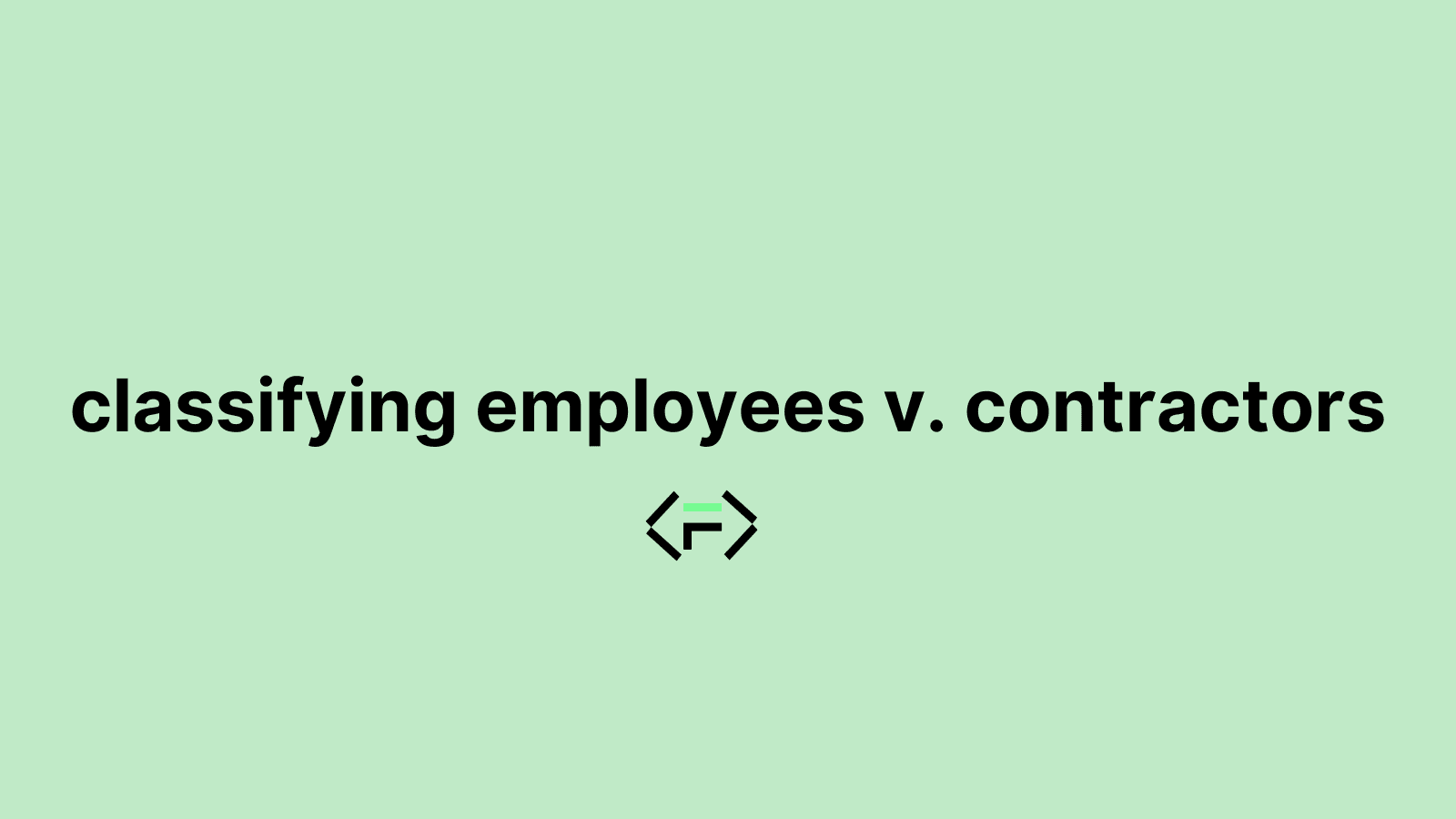Classifying Employees vs Contractors

Employee vs. Independent Contractor: Understanding the Difference
Before diving into the classification criteria, it’s essential to understand the fundamental differences between employees and independent contractors.
Employees
Management Control: Employees are typically under the control and direction of the employer concerning how and when work is performed.
Tax Obligations: Employers withhold income taxes, Social Security, and Medicare from employees’ paychecks.
Protection: Employees are protected by federal and state labor laws, including minimum wage, overtime pay, and workplace safety regulations.
Benefits: Employers may offer employees benefits such as health insurance, paid time off, and retirement plans. For employers of a certain workforce size, they may be obligated to provide health insurance.
Independent Contractors
Management Control: Independent contractors maintain control over how and when they perform the work.
Tax Obligations: Independent contractors are responsible for paying their own income taxes, as employers do not withhold taxes from their payments.
Protection: Independent contractors are not covered by most labor laws, including minimum wage, overtime pay, and workplace protections.
Benefits: Not eligible for any benefits
Factors to Consider for Classification
There are three criteria that the Labor Department and the IRS use to evaluate whether a worker should be classified as an employee or an independent contractor. They are:
Behavioral Control
Instructions: Does the employer provide detailed instructions on how the work should be performed?
Training: Does the employer provide training to the worker?
Evaluation System: Does the employer evaluate the worker’s performance based on specific criteria?
Financial Control
Investment: Does the worker have a significant investment in the tools and equipment necessary to perform the job?
Expense Reimbursement: Does the worker receive reimbursement for business expenses?
Opportunity for Profit or Loss: Does the worker have the opportunity to make a profit or incur a loss based on their work?
Relationship Type
Contract: Is there a written contract outlining the relationship between the employer and the worker?
Benefits: Does the worker receive employee benefits such as health insurance, paid time off, or retirement plans?
Duration: Is the relationship expected to be long-term or project-based?
Consequences of Misclassification
Misclassifying employees as independent contractors can lead to severe consequences, including:
Legal Penalties: Fines and penalties for non-compliance with labor laws and tax regulations.
Back Pay: Owed wages, overtime pay, and benefits may need to be paid retroactively.
Tax Issues: Back taxes, interest, and penalties for unpaid taxes may be assessed.
Legal Action: Employees may file lawsuits for unpaid wages, benefits, and damages.
If you have questions about how to classify your workers and are looking for a payroll solution, please feel free to reach out.






